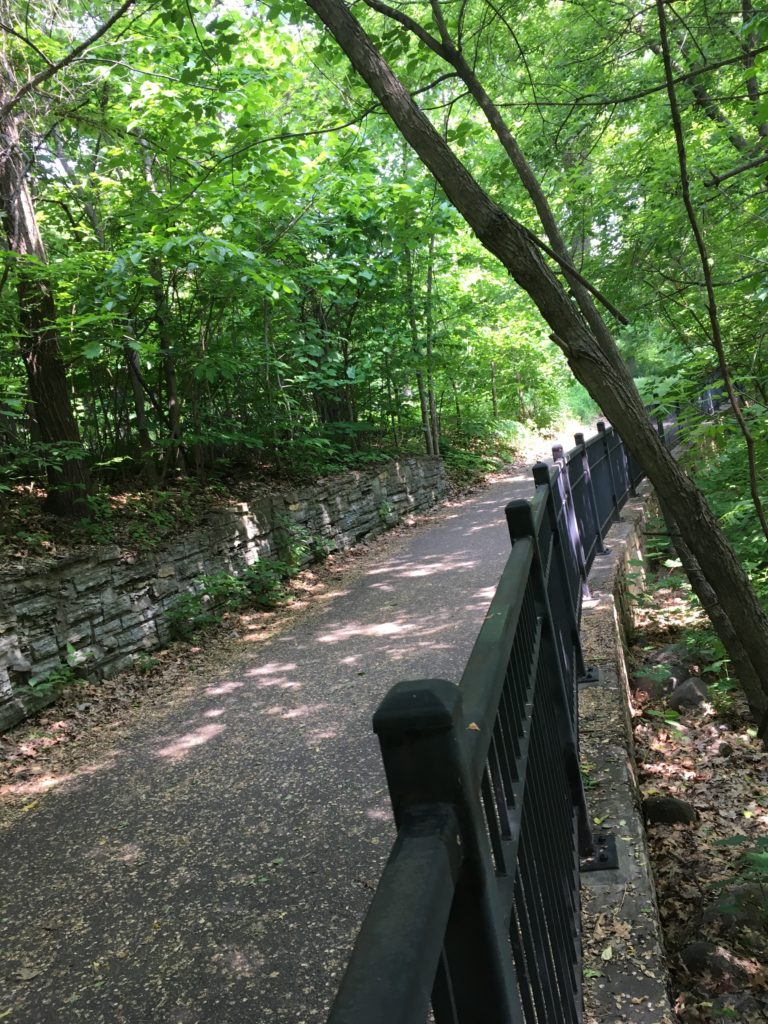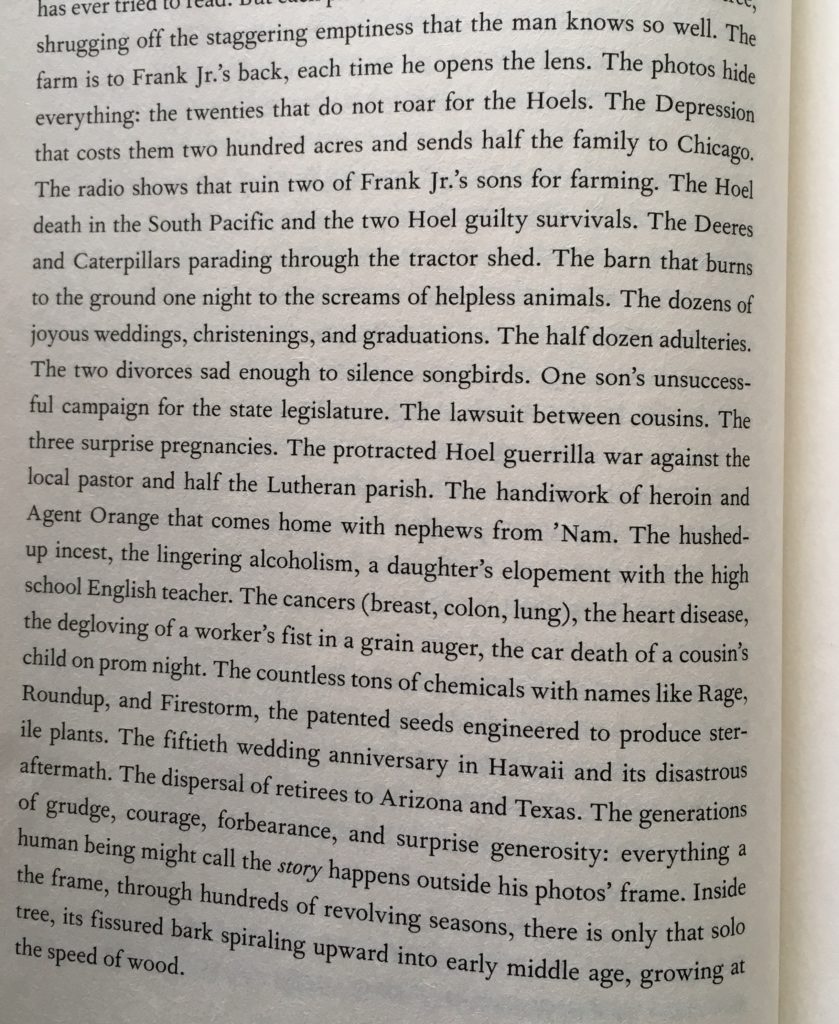2.9 miles
north to railroad bridge/stairs to path below/white sands/rowing club/upper path
68 degrees
My legs are sore today. Partly because it’s my third day in a row running and partly because I decided to start runner’s world’s squat challenge this morning (since my lower back has been bugging me intermittently for the past 6 months, I’m always looking for ways to strengthen it). Decided to listen to my audio book and run past the part of the path above the floodplain forest and towards the railroad trestle. Noticed right away that it was hard to breathe–the cottonwood trees are snowing cotton. The edges of the path were a soft white and little bits of fuzz floated in the air in front of me.
Ran to the railroad trestle and felt wiped out. Took the steps down below and walked the Winchell trail, halfway up the gorge. Beautiful! I was a bit uneasy because after seeing no one but one man, I looked up at the sides of the limestone gorge and realized, in all the green, how hidden I was and how steep any path out would be. No steps leading up. No winding dirt trail. But my unease wasn’t too bad. I started running and caught quick glimpses of the river through the breaks in the tree line. Made it to the Minneapolis Rowing Club and walked up the steep driveway. Started running again and kept going until I returned to my favorite part of the run: where the walking path dips below the road and follows the edge of the bluff right above the floodplain forest.
I stopped on the edge to look down at the forest and noticed that I was in the midst of three fences: a wrought iron fence on the edge of the hill, a stone retaining wall dividing the lower walking path from the upper biking path, and a split rail fence above the wall beside the biking path. So cool to have all 3 fences here, especially since I’ve been wanting to write about this section and about the different types of fences on this route.

The other thing I noticed as I walked up, along the edge, was how green everything was. Different shades (or tints?) of green covering the ground, blotting out the sky. No river, no sky, no forest floor. Only green with the occasional brown trunk or branch. Disorienting, but really cool. At this part, the footpath is flanked on both sides with green–a tunnel of trees, with a smallish circle of light up the hill (the opposite direction of this picture), leading out to 2 big boulders and a porta potty at the northern edge of the 35th street parking lot.
The Prose Poem
Campbell McGrath
On the map it is precise and rectilinear as a chessboard, though driving past you would hardly notice it, this boundary line or ragged margin, a shallow swale that cups a simple trickle of water, less rill than rivulet, more gully than dell, a tangled ditch grown up throughout with a fearsome assortment of wildflowers and bracken. There is no fence, though here and there a weathered post asserts a former claim, strands of fallen wire taken by the dust. To the left a cornfield carries into the distance, dips and rises to the blue sky, a rolling plain of green and healthy plants aligned in close order, row upon row upon row. To the right, a field of wheat, a field of hay, young grasses breaking the soil, filling their allotted land with the rich, slow-waving spectacle of their grain. As for the farmers, they are, for the most part, indistinguishable: here the tractor is red, there yellow; here a pair of dirty hands, there a pair of dirty hands. They are cultivators of the soil. They grow crops by pattern, by acre, by foresight, by habit. What corn is to one, wheat is to the other, and though to some eyes the similarities outweigh the differences it would be as unthinkable for the second to commence planting corn as for the first to switch over to wheat. What happens in the gully between them is no concern of theirs, they say, so long as the plough stays out, the weeds stay in the ditch where they belong, though anyone would notice the wind-sewn cornstalks poking up their shaggy ears like young lovers run off into the bushes, and the kinship of these wild grasses with those the farmer cultivates is too obvious to mention, sage and dun-colored stalks hanging their noble heads, hoarding exotic burrs and seeds, and yet it is neither corn nor wheat that truly flourishes there, nor some jackalopian hybrid of the two. What grows in that place is possessed of a beauty all its own, ramshackle and unexpected, even in winter, when the wind hangs icicles from the skeletons of briars and small tracks cross the snow in search of forgotten grain; in the spring the little trickle of water swells to welcome frogs and minnows, a muskrat, a family of turtles, nesting doves in the verdant grass; in summer it is a thoroughfare for raccoons and opossums, field mice, swallows and black birds, migrating egrets, a passing fox; in autumn the geese avoid its abundance, seeking out windrows of toppled stalks, fatter grain more quickly discerned, more easily digested. Of those that travel the local road, few pay that fertile hollow any mind, even those with an eye for what blossoms, vetch and timothy, early forsythia, the fatted calf in the fallow field, the rabbit running for cover, the hawk’s descent from the lightning-struck tree. You’ve passed this way yourself many times, and can tell me, if you would, do the formal fields end where the valley begins, or does everything that surrounds us emerge from its embrace?
